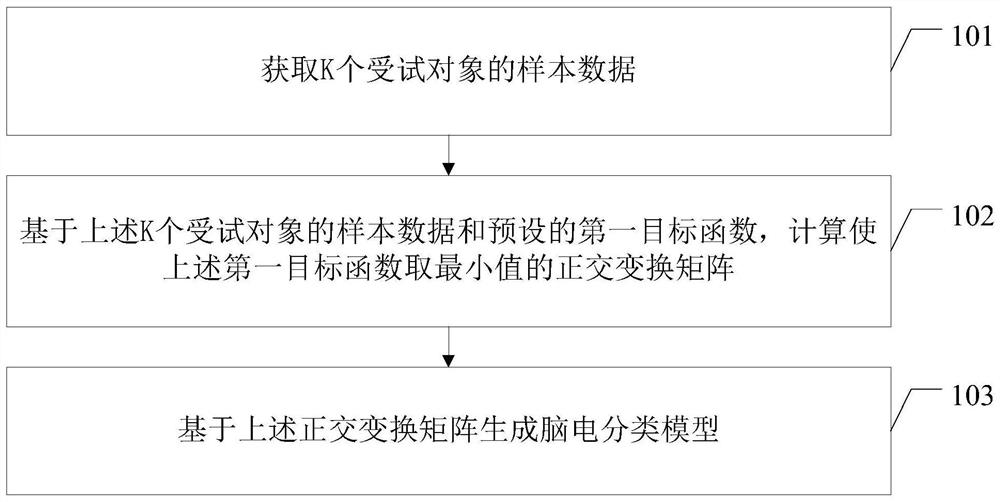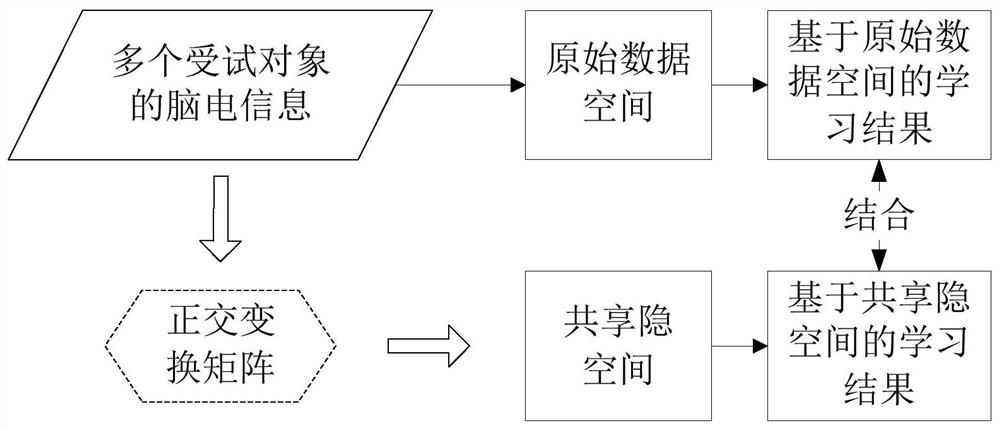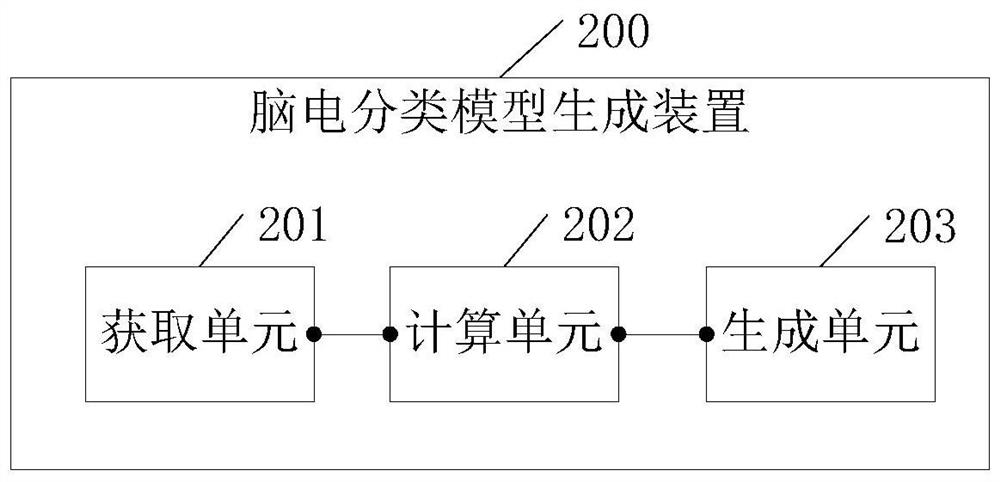EEG classification model generation method, device and electronic equipment
A classification model and generation device technology, applied in the field of brain-computer interaction, can solve problems such as poor generalization performance and increased maintenance costs of EEG classification models, and achieve the effect of saving maintenance costs
- Summary
- Abstract
- Description
- Claims
- Application Information
AI Technical Summary
Problems solved by technology
Method used
Image
Examples
Embodiment 1
[0053] An embodiment of the present application provides a method for generating an EEG classification model. The EEG classification model generation method can be applied to an EEG classification model generation device. The EEG classification model generation device can be an independent device, or an EEG classification model generation device. The model generation device can also be integrated in electronic devices (such as smart phones, tablet computers, computers, and wearable devices, etc.). Optionally, the device or electronic device integrated with the EEG classification model generation device may be equipped with an ios system, an android system, a windows system or other operating systems, which are not limited here.
[0054] see Figure 1-a , the EEG classification model generation method in the embodiment of the present application may include:
[0055] Step 101, acquiring sample data of K test subjects;
[0056] In the embodiment of the present application, the ...
Embodiment 2
[0093] The embodiment of the present application provides an EEG classification model generation device, such as figure 2 As shown, the EEG classification model generation device 200 in the embodiment of the present application includes:
[0094] The acquisition unit 201 is configured to acquire sample data of K test subjects, wherein the sample data includes: classified EEG information and classification results of corresponding EEG information, and K is greater than or equal to 2;
[0095] A calculation unit 202, configured to calculate an orthogonal transformation matrix that minimizes the first objective function based on the sample data of the K test subjects and a preset first objective function, wherein the first objective The function is a function related to the orthogonal transformation matrix and the EEG information of K subjects, and the orthogonal transformation matrix is used to transform the respective EEG information of the K subjects into the K subjects Co...
Embodiment 3
[0113] The embodiment of this application provides an electronic device, please refer to image 3 , the electronic device in the embodiment of the present application includes: a memory 301, one or more processors 302 ( image 3 Only one of them is shown) and a computer program stored on the memory 301 and executable on the processor. Wherein: the memory 301 is used to store software programs and modules, and the processor 302 executes various functional applications and data processing by running the software programs and units stored in the memory 301 . Specifically, the processor 302 implements the following steps by running the above-mentioned computer program stored in the memory 301:
[0114] Obtaining sample data of K subjects, wherein the sample data includes: classified EEG information and classification results of corresponding EEG information, and K is greater than or equal to 2;
[0115]Based on the sample data of the K test subjects and the preset first objectiv...
PUM
 Login to View More
Login to View More Abstract
Description
Claims
Application Information
 Login to View More
Login to View More - R&D
- Intellectual Property
- Life Sciences
- Materials
- Tech Scout
- Unparalleled Data Quality
- Higher Quality Content
- 60% Fewer Hallucinations
Browse by: Latest US Patents, China's latest patents, Technical Efficacy Thesaurus, Application Domain, Technology Topic, Popular Technical Reports.
© 2025 PatSnap. All rights reserved.Legal|Privacy policy|Modern Slavery Act Transparency Statement|Sitemap|About US| Contact US: help@patsnap.com



